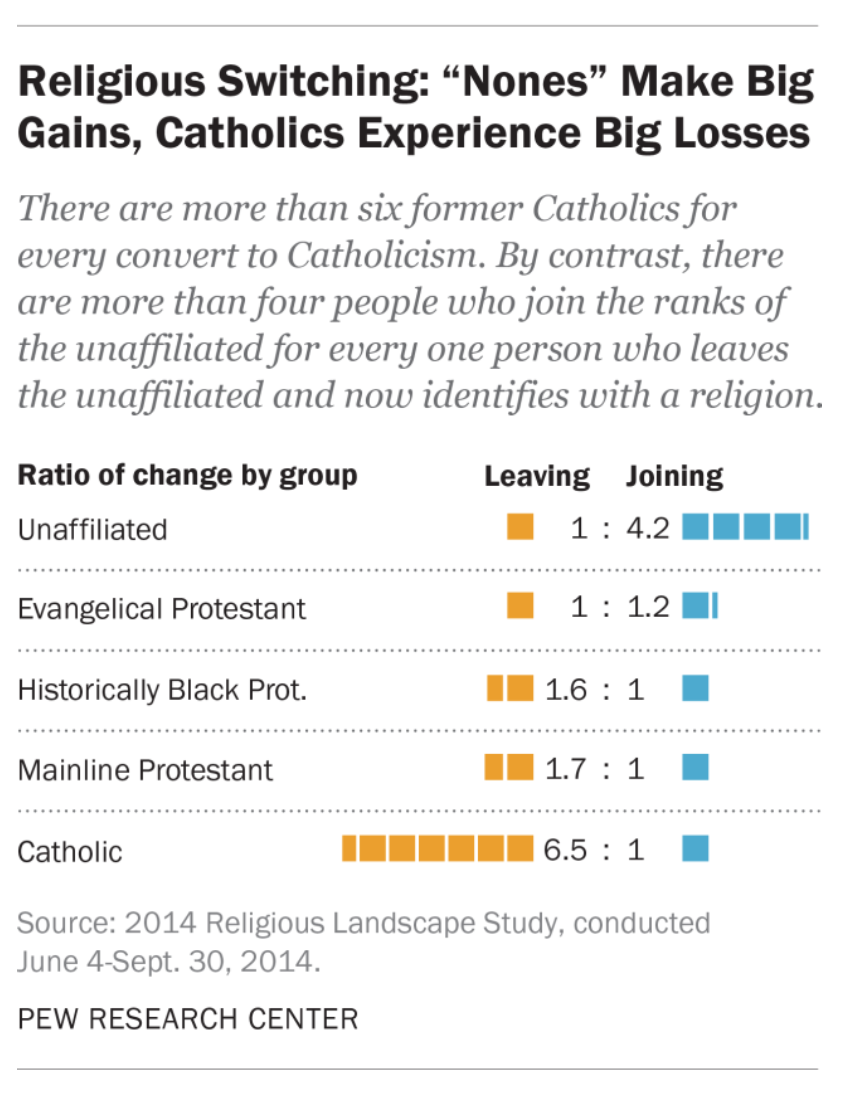We’ve heard this story before. A quick survey of Google results show the theory going back years: because atheists rely on contraception and various religious groups encourage couples to have many, many kids, our share of the population will diminish over time and religious populations will rise once more.
But this line of argumentation has been given fresh life by a new study published in Evolutionarly Psychological Science entitled “The Future of Secularism: a Biologically Informed Theory Supplemented with Cross-Cultural Evidence.” In it, the researchers state:
While cross-sectional in nature, when our results are combined with evidence that both religiosity and fertility are substantially heritable traits, findings are consistent with view that earlier trends toward secularization (due to science education surrounding advancements in science) are currently being counter-balanced by genetic and reproductive forces. We also propose that the inverse association between intelligence and religiosity, and the inverse correlation between intelligence and fertility lead to predictions of a decline in secularism in the foreseeable future. A contra-secularization hypothesis is proposed and defended in the discussion. It states that secularism is likely to undergo a decline throughout the remainder of the twenty-first century, including Europe and other industrial societies.
There are a number of issues with this study. Let’s break it down.
First off, the idea that religious women don’t use contraception is an outright myth, particularly in the United States. Research from the Guttmacher Institute found that roughly 90% of all Catholic, Mainline Protestant, and Evangelical Protestant women use some form of contraception, with 69% relying on the most highly effective methods (sterilization, oral contraceptives, IUDs, etc).

In general, it’s difficult to find reliable statistics about the use of contraception among other religious groups in the United States, but even globally, the number is generally higher than one might expect, particularly among Muslims. As research from the Pew Research Center points out:
Fewer than half of married women ages 15-49 in Muslim-majority countries (47.8%) use any method of birth control. By comparison, 63.3% of married women in the same age group who live in non-Muslim-majority, less-developed countries and 68.5% of those living in more developed countries use some form of birth control. Moreover, the proportion of married women ages 15-49 who use modern methods of contraception (devices or procedures such as condoms, birth control pills, spermicidal foams, intrauterine devices and tubal ligations) is much lower in Muslim-majority countries (39.4%) than in non-Muslim-majority countries (about 58%).
Notwithstanding these differences, use of birth control has become a more accepted practice in Muslim-majority countries since the 1990s, contributing to the decline in fertility rates in many of these countries.
In the 44 Muslim-majority countries for which data on use of birth control are available, 20 report that half or more of married women ages 15-49 practice some form of birth control.
That last sentence? That’s another really important factor in this conversation. There are a number of countries where access to birth control is either outright prohibited or severely restricted. In Malaysia, in particular, there are still hospitals that ask for one’s marital status before providing access to birth control.
The study really does fail to account for a massive cultural spread, specifically in terms of access, population density, and atheist discrimination between the two nations in question. In the United States, students from non-religious families had only 0.16 fewer siblings than their religious counterparts. In Malaysia, the spread was much larger, with students from non-religious families having 1.5 fewer siblings on average.
But the religious demographics in each country are vastly different. Atheists may still face discrimination in the United States, but their numbers are still rising. According to a 2010 census in Malaysia, the number of atheists was miniscule — 0.07% of the population. Given the ongoing outright persecution of atheists in the region and minimal reach of globalization mentioned above, the situation is far more complex than the study suggests. And really, survey results in two nations, particularly ones with such large cultural differences, are hardly globally representative.
Beyond that, the researchers’ methodology is suspect. They surveyed students in the United States and Malaysia, asking them about their religious backgrounds and how many siblings they had. While this might be indicative of past trends, it fails to consider prevailing secular crosswinds. Specifically: having religious parents is not necessarily indicative of being religious oneself. Though prior studies have indicated that children of religious parents are far more likely to be religious themselves, these studies fail to account for trends in deconversion.

As the Pew Research Center’s 2014 Religious Landscape Study found, individuals identifying as atheist had doubled over a period of 7 years — a massive jump relative to past time periods. The jump was just slightly lower for agnosticism. In other words, the “hereditary” nature of religion is losing its grip. So even if the birthrate among atheist couples is lower than that of religious couples, as the secular population grows independent of familial ties to religion, it is unlikely that there will be a substantial loss in the atheist population.
The funny part is that the report itself acknowledges as much. In their introduction, the researchers say outright that they will not be addressing the mountain of research compiled on rising rates of secularism and its origins. How they can admit as much and still believe in the integrity of their conclusions is beyond me.
But here’s the thing: If the population does become more secular and the birth rate continues to decline in some meaningful way overall, why is that necessarily a bad thing? After all, the global population is rising at a rapid rate, and overpopulation has significant impacts on public health and the environment.
Regardless, this old argument, despite its fancy new trappings, is still a bad argument. Hate to break it to religious folks out there, but atheists aren’t going anywhere.
(Top image via Shutterstock)




It’s Moving Day for the Friendly ..."
It’s Moving Day for the Friendly ..."
It’s Moving Day for the Friendly ..."
It’s Moving Day for the Friendly ..."